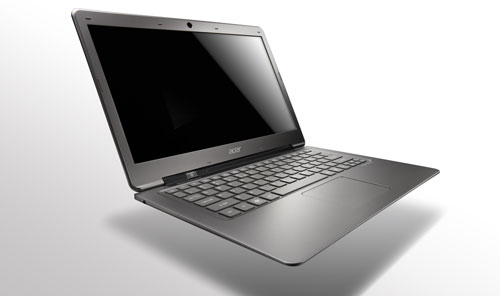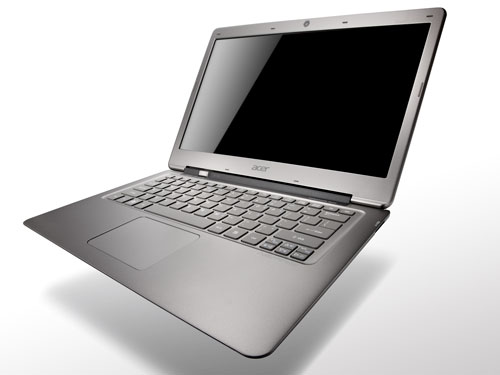
For a long time, the only real manufacturer of the sort of slim, lightweight laptops that have earned the title “ultrabooks” has been Apple with its MacBook Air range. That’s fine if you’re an Apple user, or don’t mind becoming one, but not if you want or need to use Windows. Finally, makers of Windows machines are coming to the party with “ultrabooks”, and Acer’s Aspire S3 is one of the best-priced offerings on the market.
The S3 is being punted in the US as a sub-US$1 000 laptop, with the entry-level model retailing there for $899. Here, the same model — which includes a 320GB hard-drive, 4GB of RAM and an Intel Core i5 processor — is expected to cost R9 999. Add a 240GB solid-state drive (SSD) and you’re looking at R14 999, a not inconsiderable jump, and if you want a faster Core i7 processor with that SSD you’re looking at R16 999.
TechCentral reviewed the entry-level S3 model. The machine offers two USB 2.0 ports and an HDMI port on its rear next to the power socket. The only other ports are a 3,5mm audio jack on the left-hand side and a card reader on the right. As with most ultra-portables, there is no optical drive.
As expected, the S3 is incredibly slim at just 13mm and, at 1,4kg, weighs only 50g more than the 13-inch MacBook Air.
The S3 we reviewed came with Windows 7 Home Premium 64-bit preinstalled, but we replaced this with the developer edition of Windows 8 (and why the heck not?).
The trackpad on the S3 is one of the better ones we’ve seen on a PC notebook, having done away with the left and right buttons and made the entire thing clickable instead. It could, however, be a little bigger.
Boot-up is snappy at under 20s, and the S3 wakes from sleep in about two seconds, making it ideally suited to the digital nomad or out-of-office worker.
Curiously, Acer has opted for gray, plastic keys on its keyboard. Though they’re attractive, they feel cheap, aren’t as responsive as we’d like, and look prone to dirt accumulation. We also didn’t like the fact that the return/enter key has been split with the top half given to backslash, and the miniaturised navigation, shift and tab keys, but then we use those keys more than others might.

The power button sits in between the screen’s hinges, making it possible to fiddle with whether the lid is open or closed. This doesn’t seem like a design decision so much as a design accident and, although it’s hardly a problem, it is strange seeing half of the power button peering out of the device when it’s closed.
We did like the lack of stickers shouting about the innards that are so common on Windows-based laptops. There are only two beneath the left-hand side of the keyboard and can be easily removed without leaving a gooey mess behind.
Like many of its contemporaries, the S3 includes a 13,3-inch display with a resolution of 1366×768 pixels. Though this is a lower resolution than some of its peers, we found the screen full of contrast and pleasingly crisp. However, with only a three-cell battery that claims six hours of use, you might want to keep the screen’s brightness down for added longevity.
Overall, performance was as expected and even the onboard sound is a little above average. On the whole, the S3 is a good device that’s decently priced, but we would have liked to have seen a few more premium options for a device that’s skirting the five-figure boundary. USB 3.0 support is one.
If nothing else, the S3 is a good sign of things to come from Acer. — Craig Wilson, TechCentral
- Subscribe to our free daily newsletter
- Follow us on Twitter or on Google+ or on Facebook
- Visit our sister website, SportsCentral (still in beta)




